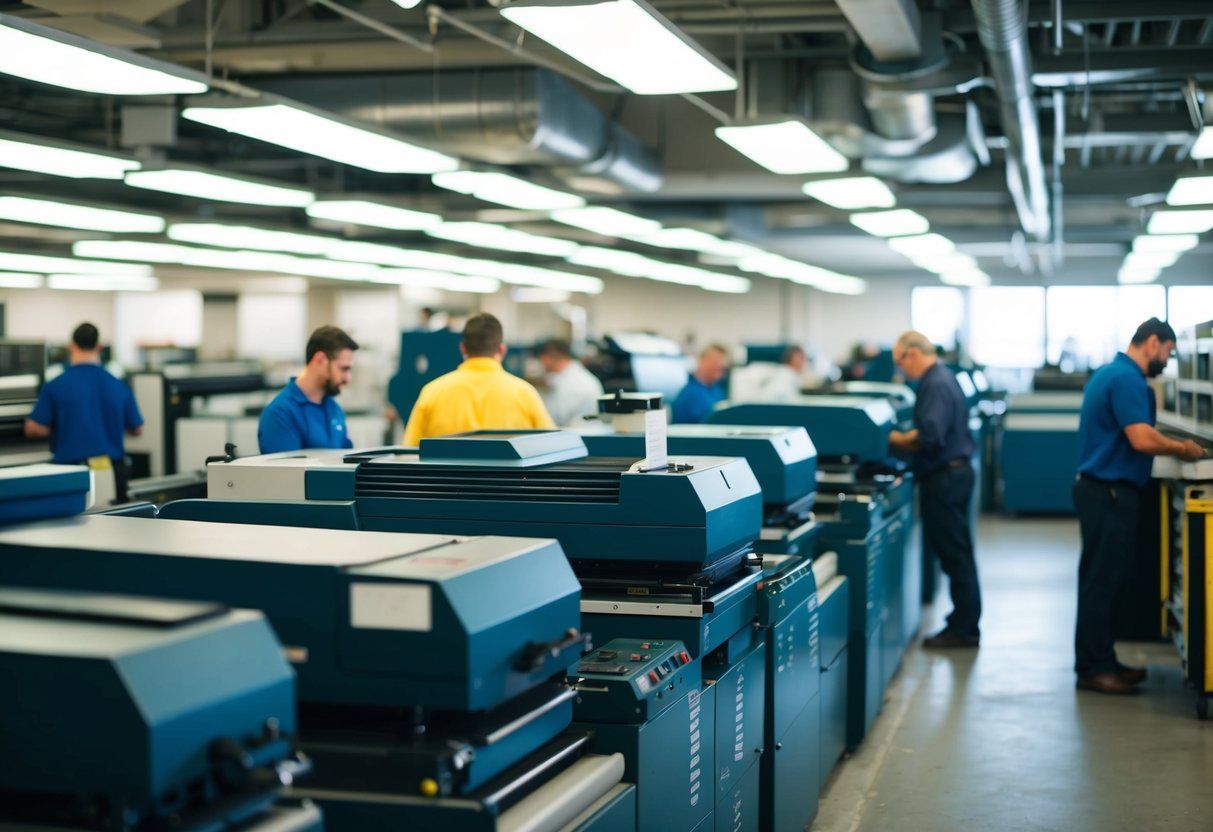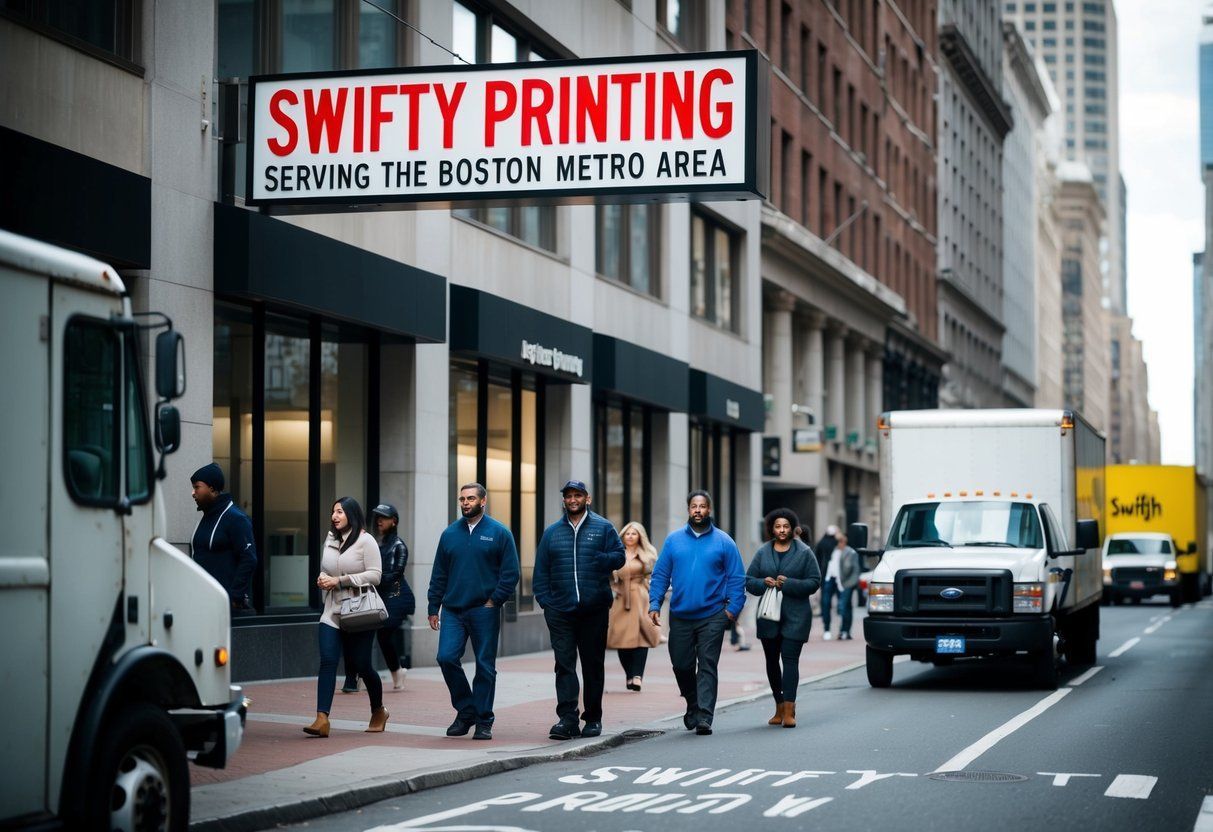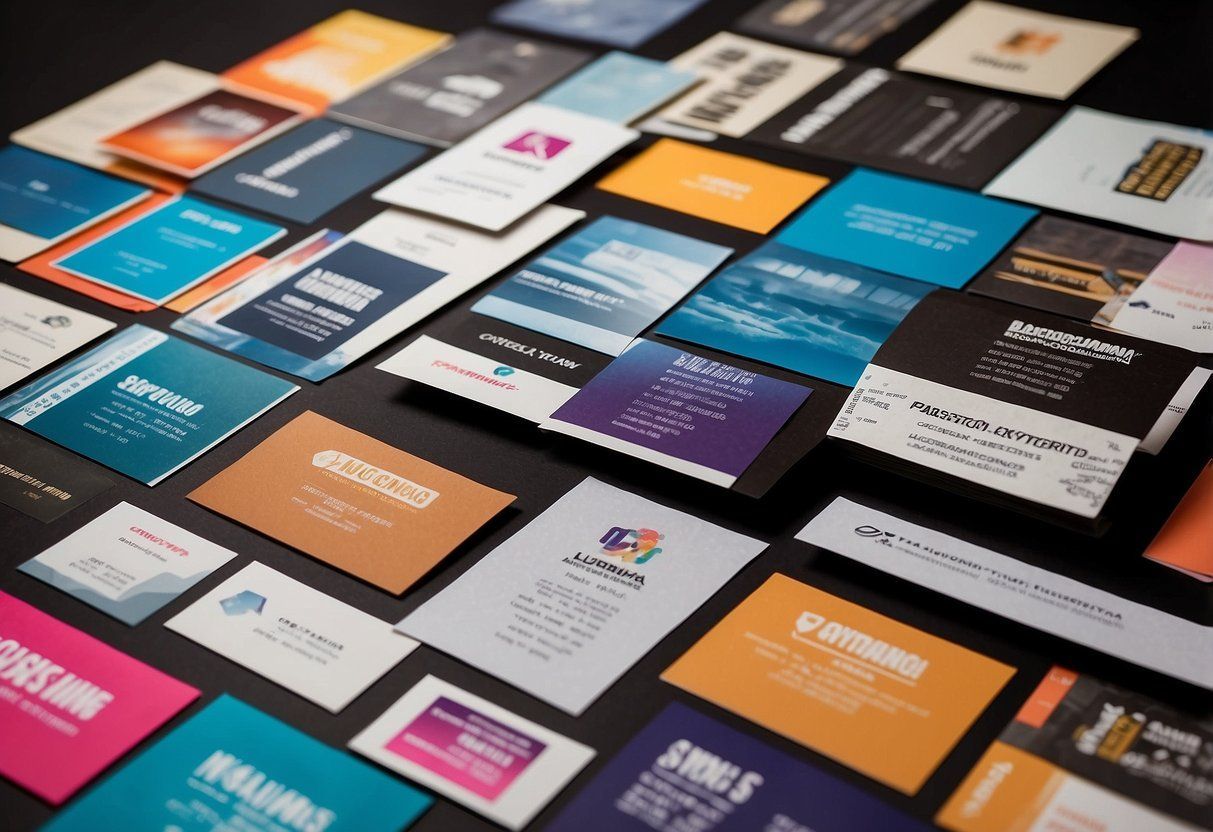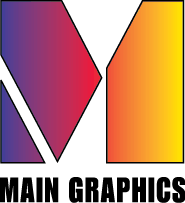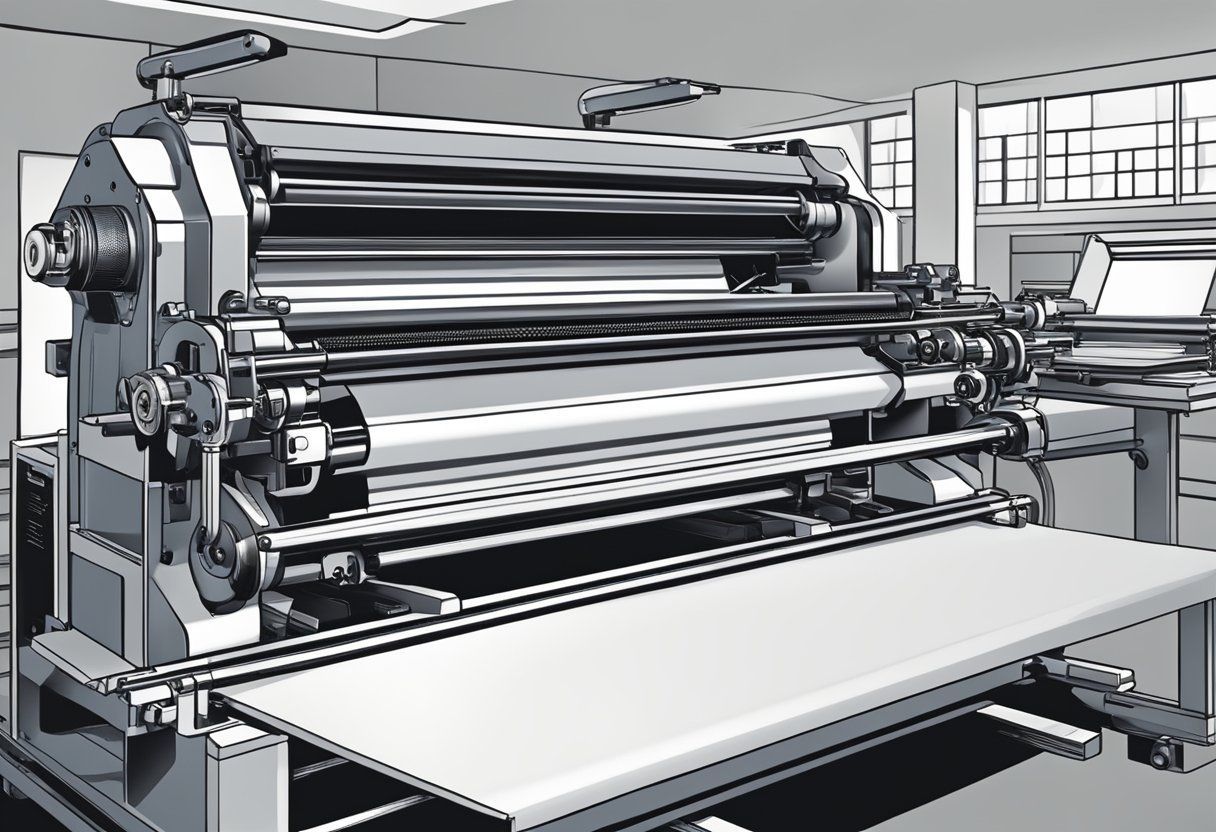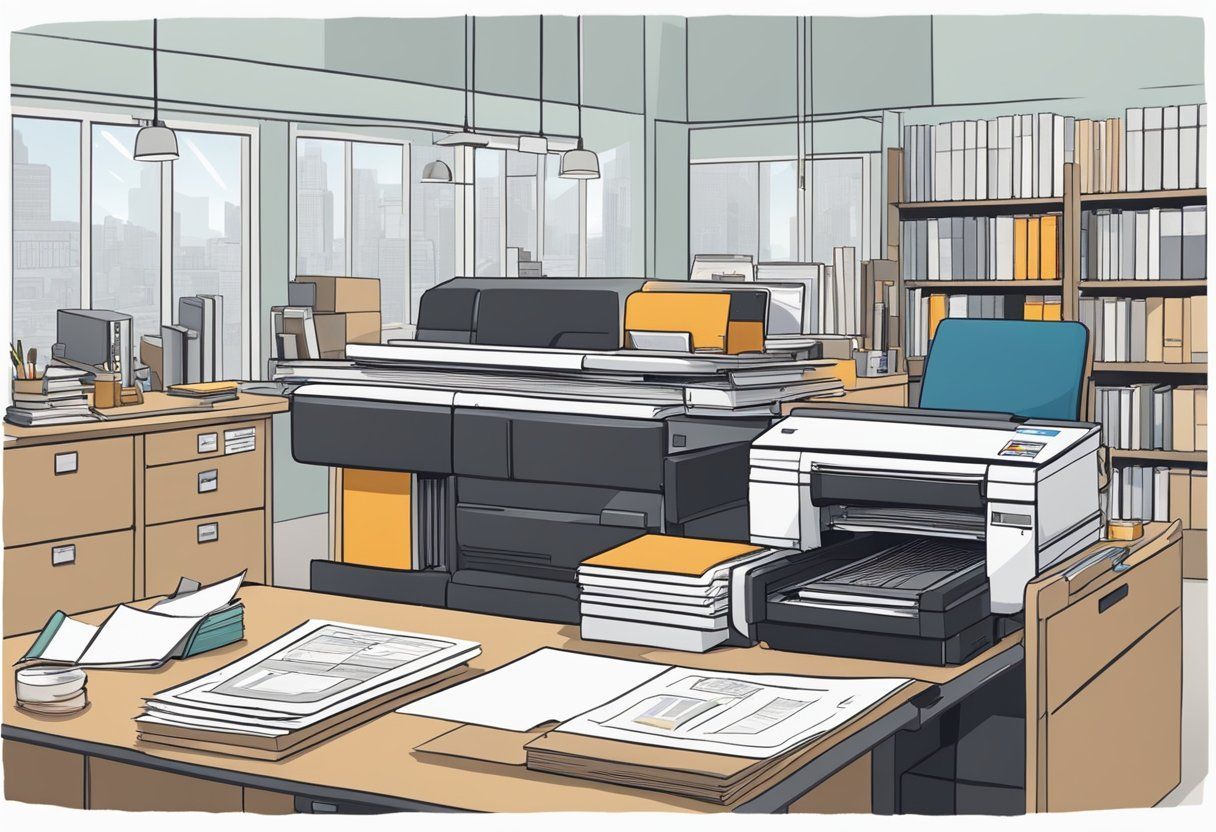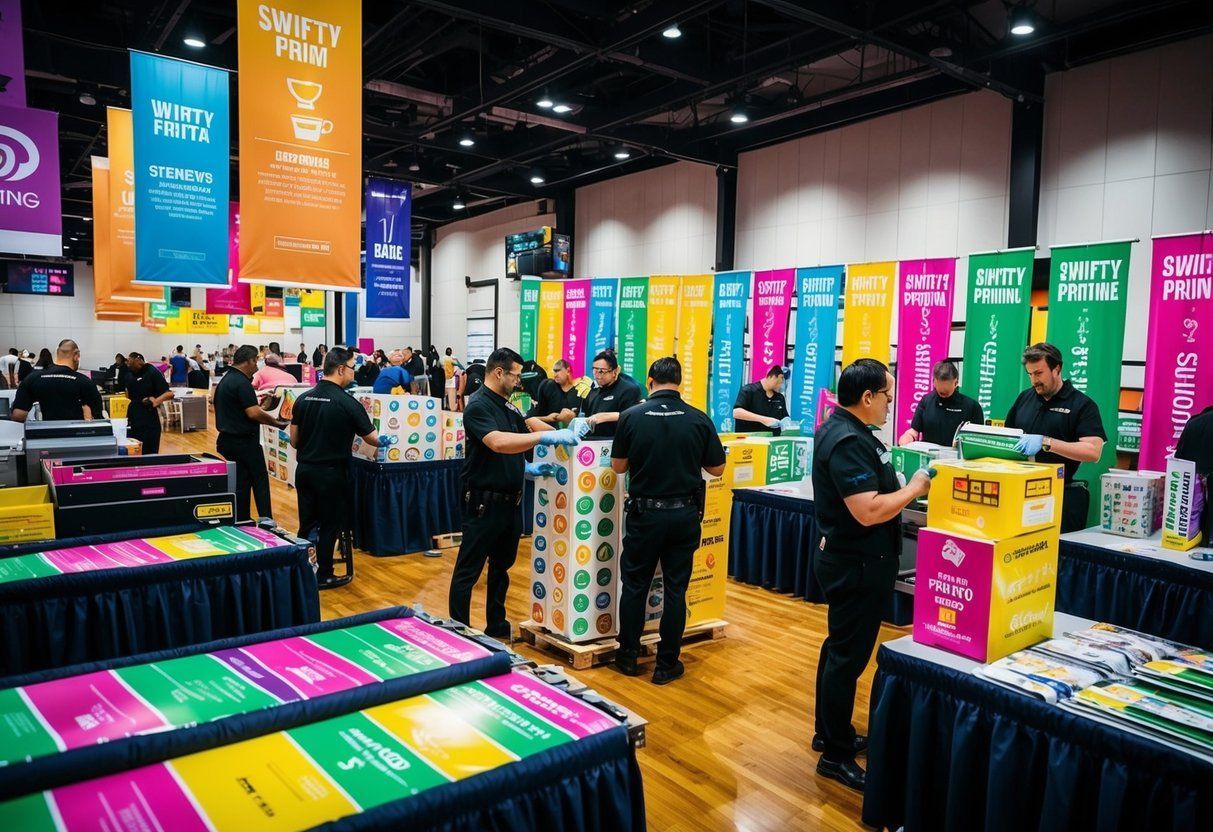Printed Products Overview: Comparing Brochures, Banners, Posters, and More
Printed materials play a crucial role in marketing and communication strategies for businesses and organizations. Brochures, banners, and posters are among the most popular printed products used for promotional activities. Each of these materials serves a specific purpose and, when used effectively, can significantly increase visibility and engagement. Brochures, with their compact format, provide a substantial amount of information in a digestible manner, making them ideal for detailed explanations of products or services.
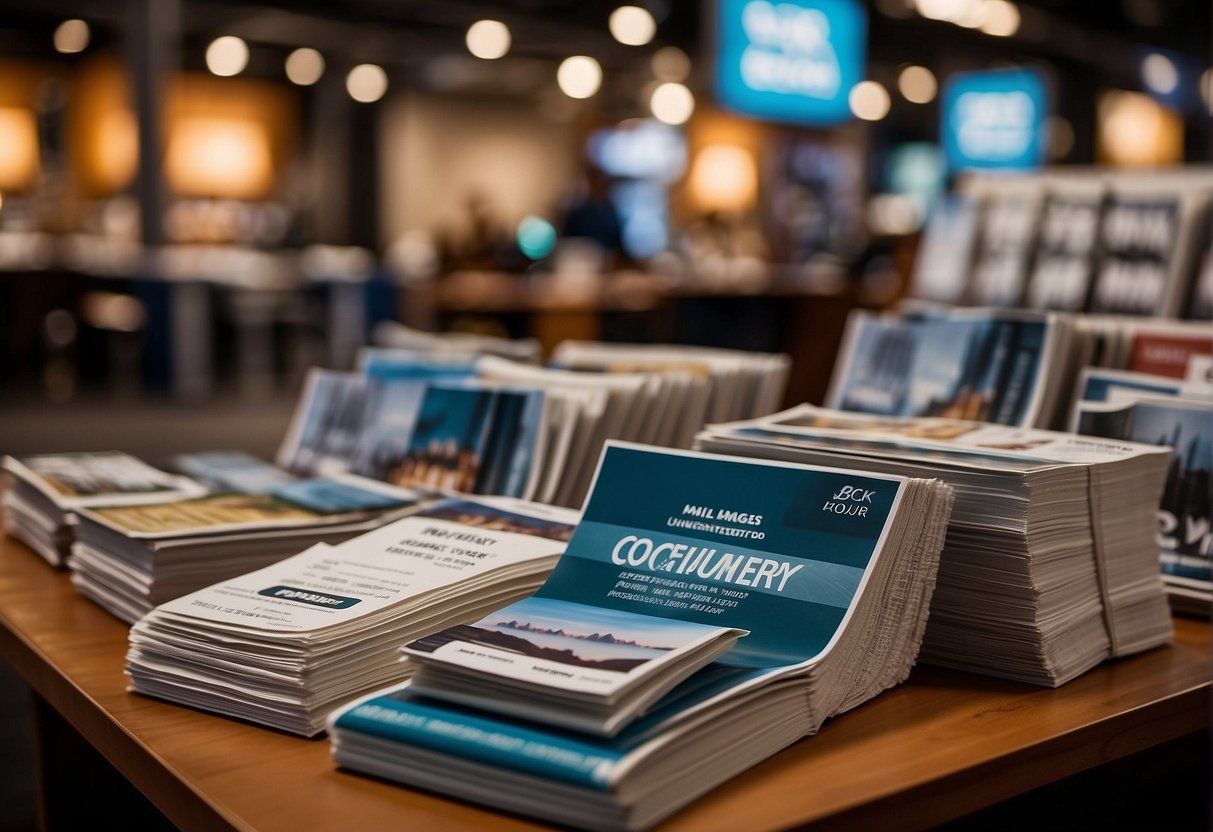
Banners , on the other hand, are designed to capture attention quickly and are often utilized in high-traffic areas. Their large size and typically bold designs make them hard to miss, ensuring that the intended message reaches a wide audience. Posters also cater to grabbing attention but are frequently used within indoor settings to communicate information or as part of a larger visual display.
Key Takeaways
- Printed materials such as brochures, banners, and posters have distinct purposes and contribute uniquely to marketing efforts.
- Effective design and strategic placement are critical for maximizing the impact of printed products.
- Understanding print production, distribution, and the measurement of their impact is essential for informed marketing decisions.
Understanding Printed Products
Printed products are essential tools in marketing and advertising; they function to educate and inform a targeted audience about services, events, or products through a tangible format.
Defining Brochures, Banners, and Posters
Brochures are marketing materials designed in a compact, foldable format. They typically present information about a company, its products, or services in an accessible and concise manner. Brochures are used to convey detailed information in a structured layout, often including bullet points, images, and infographics.
Table: Common Brochure Types
| Type | Description | Use-case |
|---|---|---|
| Bi-fold | A single sheet folded in half, creating four panels. | Menus, event programs |
| Tri-fold | A single sheet folded twice, creating six panels. | Corporate information, services |
| Gate-fold | The ends fold to meet in the middle, creating a gate-like look. | Presentations, launches |
Banners are large pieces of material displaying slogans, logos, or messages. They are prominent tools for both indoor and outdoor advertising and are crafted to grab attention quickly.
Banners often include:
- Bold text
- High-contrast colors
- Brand logos
Posters refer to printed papers designed for sticking on walls or surfaces in high visibility areas. They are promotional elements that combine visual and textual elements to capture the attention of passersby.
The Role of Printed Materials in the Digital Age
Despite the rise of digital media, printed products like brochures, banners, and posters remain a fundamental aspect of comprehensive marketing efforts. They provide a physical presence for advertising messages in a digital landscape, aiding in brand recall and customer engagement.
In the digital age, printed materials:
- Complement online campaigns
- Offer tactile engagement
- Reinforce brand messaging
They serve a crucial role by giving audiences a physical representation of a brand, which can be influential in a predominantly digital marketing environment.
Brochures
Brochures serve as versatile marketing tools, effectively combining vivid imagery with informative text. They are widely utilized for educational and promotional reasons across various industries.
Types of Brochures
There are numerous types of brochures , each defined by their fold pattern. The common types include:
- Bi-fold Brochure : A single sheet folded in half, thus creating four panels.
- Tri-fold Brochure : A sheet folded twice to create three panels on each side, often used in marketing campaigns .
- Leaflet/Flyer : Single unfolded sheets, usually with a straightforward, quick message.
Brochures may also come as booklets, featuring multiple pages bound together, which are ideal for containing more information .
Designing Effective Brochures
To design an effective brochure , several elements must be carefully considered:
- Cover : Must feature an attention-grabbing headline and design to entice the recipient to open the brochure.
- Layout : Organized with headings, bullet points, and sections to improve readability.
- Text : Clear, concise, and targeted towards the intended audience .
- Images : High-quality images that complement and reinforce the text.
- Contact Information : Clearly displayed to facilitate easy action from the reader.
Inclusion of inserts can provide additional, targeted information, making the brochure a comprehensive communication tool.
Uses and Purposes for Brochures
Brochures are employed in numerous ways, each aiming to reach specific audiences :
- Educational Purposes : To inform the audience about a topic or instructions.
- Promotional Distribution : Handouts at trade shows , in-store displays, or as part of direct mail.
- Marketing Campaigns : To introduce new products, services, or to detail the advantages of an offering.
Durability is a consideration in design , since brochures often need to withstand repeated handling during distribution and display at various venues.
Banners
Banners are a high-impact marketing tool often used for promoting brands and events. Their large size and bold design make them hard to ignore, which is beneficial in a variety of sales and marketing contexts.
Banner Materials and Sizes
The most commonly used banner materials are vinyl, fabric, and mesh. Vinyl banners are the most popular due to their durability and weather resistance, making them suitable for both indoor and outdoor use.
- Vinyl : Strong and weatherproof
- Fabric : Aesthetically pleasing, less durable
- Mesh : Wind-resistant, ideal for outdoors
Banners come in a range of sizes, from small (24″x72″) to large formats that can stretch over 30 feet in length, offering flexibility based on the specific needs of a marketing campaign or event.
Effective Banner Design
A well-designed banner captures attention and communicates a clear message to the target audience. Effective banner design includes:
- High-Resolution Images : Ensure clarity even at large sizes
- Bold Fonts : Make text legible from a distance
- Contrasting Colors : Enhance visibility and impact
- Clear Call to Action : Direct the audience towards the desired action
It’s essential that the design is tailored to the banner’s size and viewing distance, with larger banners requiring simpler, more impactful graphics to effectively communicate with the audience.
Strategic Placement and Uses of Banners
Banners can be strategically placed in high-traffic areas to maximize visibility and reach the intended audience. They serve multiple purposes in various contexts, including:
- Trade Shows : Stand out in crowded event spaces
- Storefronts : Promote sales or special offers
- Festivals : Direct attendees or advertise sponsors
Placement should be chosen with the intended effect in mind, whether it’s to draw foot traffic, launch a new product, or simply raise brand awareness. When banners are used effectively, they can increase visibility and contribute positively to marketing efforts.
Posters
Posters are powerful marketing tools that convey information effectively through their visual appeal. They are designed to capture attention quickly and are often used in spaces where they can be viewed by a large audience.
Poster Design Principles
The design of a poster is critical in determining its effectiveness. Design principles focus on creating a visually appealing layout that conveys information quickly and efficiently. The primary elements include:
- Images and Graphics : High-quality images and bold graphics are used to attract attention and communicate the message.
- Headline : A clear and compelling headline is critical. It should be eye-catching and summarize the poster’s purpose.
- Fonts : Readable fonts are essential. Poster designers often use large, bold fonts for headlines and smaller fonts for additional details.
- Color : Colorful designs can be very effective, but the choice of colors must be intentional, aiming for contrast and readability.
- Layout : The layout should be organized, with a strategic placement of elements to guide the reader’s eye throughout the poster.
A table representing the balance between elements in a poster design is provided below:
| Element | Role in Design | Consideration |
|---|---|---|
| Graphics | Capture attention; convey theme | Quality and relevance to the message |
| Headline | Convey main message quickly | Size and visibility |
| Fonts | Make text readable | Legibility and size |
| Color | Create visual interest; elicit emotions | Contrast and accessibility |
| Layout | Organize information | Flow and ease of navigation |
Common Uses for Posters
Posters are versatile and have several common uses across various domains:
- Educational : They often serve as educational tools in academic institutions to share knowledge or advertise lectures and seminars.
- Promotional : Businesses frequently use posters as promotional marketing materials to announce events or product launches.
- Marketing Materials : In marketing, posters can introduce a brand or service to potential customers, especially in high-traffic areas.
Posters must be strategically placed where the intended audience is most likely to see them. The size of the poster should be appropriate for the viewing distance, ensuring that the headline and key graphics are visible from afar. It’s important to tailor the content of the poster to resonate with the intended readers, whether for educational or marketing purposes.
Marketing Strategies
In leveraging printed products, the effectiveness of marketing strategies hinges on the alignment of campaign objectives with audience needs and the thoughtful integration of diverse materials.
Integrating Print in Marketing Campaigns
The synergy between digital and physical marketing realms is pivotal for a successful marketing campaign. Valuable print materials such as brochures, banners, and posters provide tangible touchpoints that can enhance digital efforts. Brochures serve as comprehensive guides, outlining products or services with detailed content and compelling graphics. They’re often utilized in both direct mail strategies and as takeaways from business events. Banners , with their larger format, are designed for high-impact visibility in public spaces, infusing educational or promotional messages into the environment of the target audience. Posters support marketing efforts with their versatility, suitable for both educational and promotional purposes, embodying clear graphics and concise messaging for quick comprehension.
- Key Element of Campaigns:
- Brochures: Detailed information, versatile in distribution.
- Banners: High visibility, public spaces impact.
- Posters: Quick messaging, educational and promotional flexibility.
Targeting the Right Audience with Print
Identifying the target audience is a cornerstone of print marketing , ensuring that the content resonates and drives engagement. For instance, direct mail campaigns can achieve a higher degree of personalization, which increases the relevance of marketing collateral for the recipient. When tailoring the design and message of printed materials, it’s critical to reflect upon the demographics, interests, and behaviors of the intended audience. A well-crafted message on a brochure can speak directly to the customer’s needs or interests, making the marketing collateral more than just an informational piece—it becomes a connection to the brand’s narrative.
- Criteria for Audience Targeting:
- Demographics: Age, income, education level.
- Interests: Hobbies, lifestyle choices, preferences.
- Behaviors: Purchasing habits, brand interactions, service usage.
Print Production and Distribution
Effective print production and distribution hinge on attention to detail and careful planning. These elements ensure that the physical marketing materials such as brochures, banners, and posters achieve their intended impact upon delivery.
Choosing the Right Paper and Finish
When selecting paper for print products, one must consider both aesthetics and functionality. The choice between gloss and matte finishes can influence the visual appeal of the material. Gloss finishes are shiny and tend to make colors pop, making them ideal for photographic images and vibrant designs. Matte finishes, on the other hand, are non-reflective and provide a more subdued and professional look. Paper thickness and fold are important for multi-page brochures, affecting both durability and the ease with which consumers can handle the materials.
Costs and Budgeting for Print Materials
Budgeting for print materials requires a careful balance between quality and expense. Costs can be influenced by factors such as:
- Paper quality : Higher quality paper increases cost.
- Size and quantity : Larger sizes and higher quantities can benefit from economies of scale.
- Finish and color : Full-color printing with a specialized finish will be more expensive.
A table to illustrate basic cost factors:
| Factor | Cost Influence | Notes |
|---|---|---|
| Paper Quality | High | Better quality, higher costs |
| Size/Quantity | Variable | Bulk printing reduces per-unit |
| Finish/Color | Medium to High | Special finishes cost extra |
Organizations must aim for a cost-effective approach that aligns with the quality expected by their target audience.
Distribution Channels for Maximum Reach
The success of marketing materials also depends on their distribution. For maximum reach, one must utilize appropriate distribution channels. Banners often appear in high-traffic areas, optimizing visibility. Brochures and posters may be distributed through the following channels:
- Mail campaigns
- In-store displays
- Trade shows and events
Each channel should be chosen based on the target audience and the intended interaction with the print material. By ensuring that marketing materials are widely available and accessible, businesses can amplify their marketing strategies effectively.
Design Considerations
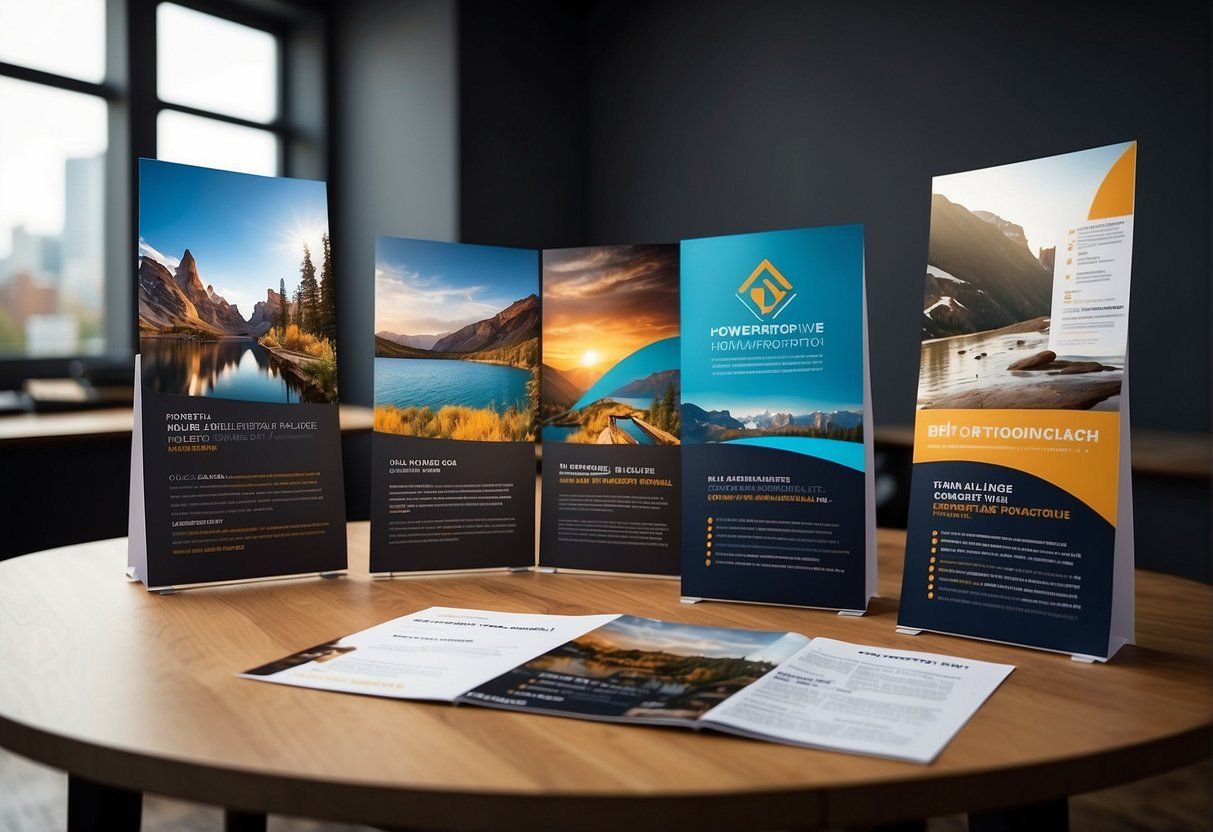
When approaching the design of printed products such as brochures, banners, and posters, it is essential to consider how visual elements and content interact to effectively reach and engage the target audience.
Key Elements of Visual Design
Visual design elements are the building blocks used to create an effective print product. These elements include:
- Layout : The arrangement of graphics, text, and white space that guides the reader’s eye and ensures the piece is easily navigable.
- Color Scheme : A purposeful selection of colors can convey emotions and attract attention. Colorful designs can be appealing, while a more subdued palette might be appropriate for formal or educational materials.
- Fonts and Typography : The choice of fonts influences readability and tone. A maximum of two or three font types is recommended to maintain clarity.
- Images and Graphics : High-quality images and graphics should be relevant to the content and services being promoted. They must complement the body of text rather than overwhelm it.
Balancing Content and Graphics
Achieving a balance between content and graphics ensures that the message is communicated effectively:
- Content : Should be concise and relevant, providing essential information without overcrowding. It is vital for promotional or educational leaflets to prioritize key messages.
- Graphics : Should amplify the message, providing visual cues and breaking up text to improve reader engagement.
- Audience Consideration : Design choices must cater to the preferences and needs of the intended audience, whether it’s a professional, educational, or consumer group.
- Templates vs. Custom Design : While templates offer a quick-start to design, custom designs can tailor to specific brand requirements and should be chosen based on the uniqueness of the project.
The integration of design elements with content is crucial for producing printed products that not only catch the eye but also deliver information effectively.
Measuring Impact
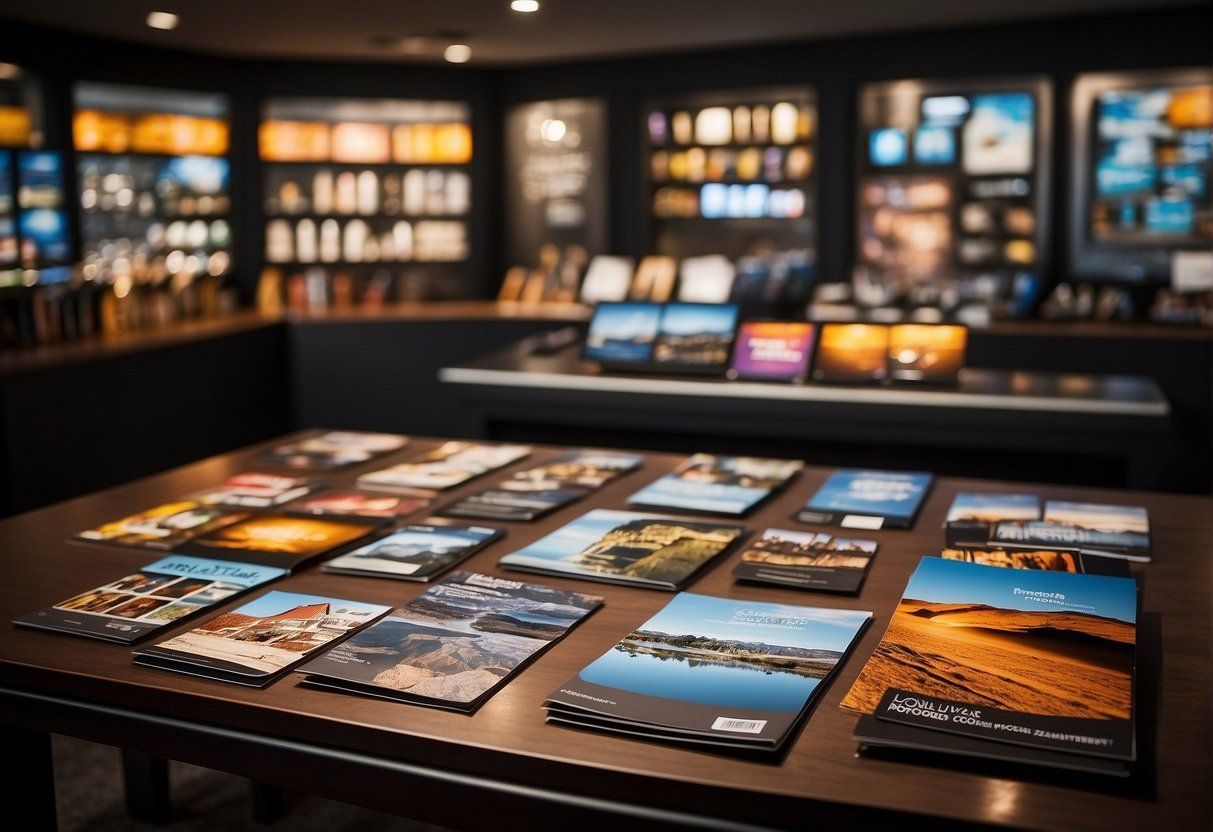
Evaluating the influence of printed products in marketing initiatives necessitates a discerning approach. Precision in gauging the success of brochures, banners, and posters is essential for understanding their effectiveness in reaching the target audience and driving sales.
Tracking Effectiveness of Printed Marketing Materials
To systematically assess the impact of printed marketing materials , businesses often deploy specific tracking mechanisms. Customer redemption codes or QR codes printed on materials like brochures or posters can quantitatively measure the response rate. By analyzing these metrics, a company can ascertain the direct effect of these materials on sales.
Utilizing short surveys at the point of sale or via online platforms can gather customer feedback, revealing which printed item most significantly influenced their purchasing decision. This information aids in refining the approach to the target audience.
Foot traffic in brick-and-mortar locations can be monitored to reveal any upticks corresponding with the distribution of banners or large-format posters. Such data, when aligned with promotional periods, can provide evidence of promotional impact.
Tracking inquiries and responses through unique contact information listed on different marketing materials adds another layer of specificity. For instance, a brochure may carry a distinct phone extension or email address to help trace prospective customer engagement back to that particular promotional tool.
Employing A/B testing can compare different designs or messages across marketing materials to determine the most impactful strategies for the audience. Sales figures and customer engagement metrics act as the primary indicators of success in such controlled experiments.
Companies might also measure the longevity of impact by assessing how long after distribution printed materials continue to bring in customers. Educational material in particular may have a sustained effect, as it often remains relevant beyond a specific marketing campaign.
Organizations can track referrals to measure the impact of printed materials designed to leverage word-of-mouth marketing. Customers might pass brochures or educational print-outs to others, expanding the original target audience and potentially boosting sales through indirect means.
It is evident that through targeted tracking methods, companies can gain a clear, quantifiable understanding of how brochures, banners, and posters contribute to marketing objectives. Specific, data-centric approaches can delineate the direct and educational roles these materials play in customer engagement and promotional success.
Industry Insights
The landscape of print marketing remains a vital component for businesses aiming to inform and attract customers. Printed products like brochures, banners, and posters hold their ground as tangible touchpoints in a digital age, offering a sensory experience that virtual mediums cannot replicate.
Expert Tips for Print Marketing Success
Know Your Audience: Tailoring printed materials to the target demographic is crucial. For a company targeting a sophisticated client base, brochures with a matte finish and subdued colors may resonate well, while a business looking to attract youthful customers might opt for vibrant posters with glossy finishes.
- Design with Purpose: The layout of each print product must be intentional. A banner promoting an event should be legible from a distance, while a brochure might focus on detailed information about services.
| Printed Product | Design Focus |
|---|---|
| Brochure | Informational content, professional layout |
| Banner | Eye-catching visuals, brief message |
| Poster | High-impact visuals, concise information |
Quality Matters: A well-crafted print can significantly affect a prospective customer’s perception of the product or service. Investing in high-quality printing indicates to customers that the business values professionalism and attention to detail.
- Distribution Strategy: The method of distribution should align with the target audience’s behavior. Placing banners at strategic, high-traffic locations can boost visibility, while handing out brochures at industry events can directly reach prospective customers.
Calls to Action: Every printed piece should have a clear call to action (CTA). Whether it encourages the reader to visit a website or attend a sale, the CTA is a pivotal element that drives the marketing goal.
Consistency is Key: All print materials should reflect the company’s branding to reinforce brand recognition. The colors, fonts, and imagery used in banners, posters, and brochures should be consistent with the business’s overall image.
Track and Adapt: Monitoring the success of printed materials helps businesses understand what resonates with their customers. Tracking redemption codes or QR scans can provide valuable insights into the effectiveness of print marketing strategies, allowing companies to adapt and refine subsequent print campaigns.
Legal and Ethical Considerations
When creating printed products such as brochures, banners, and posters, it’s crucial to consider both legal and ethical factors. These considerations ensure that advertising materials comply with regulations and respect the social norms and values of the audience.
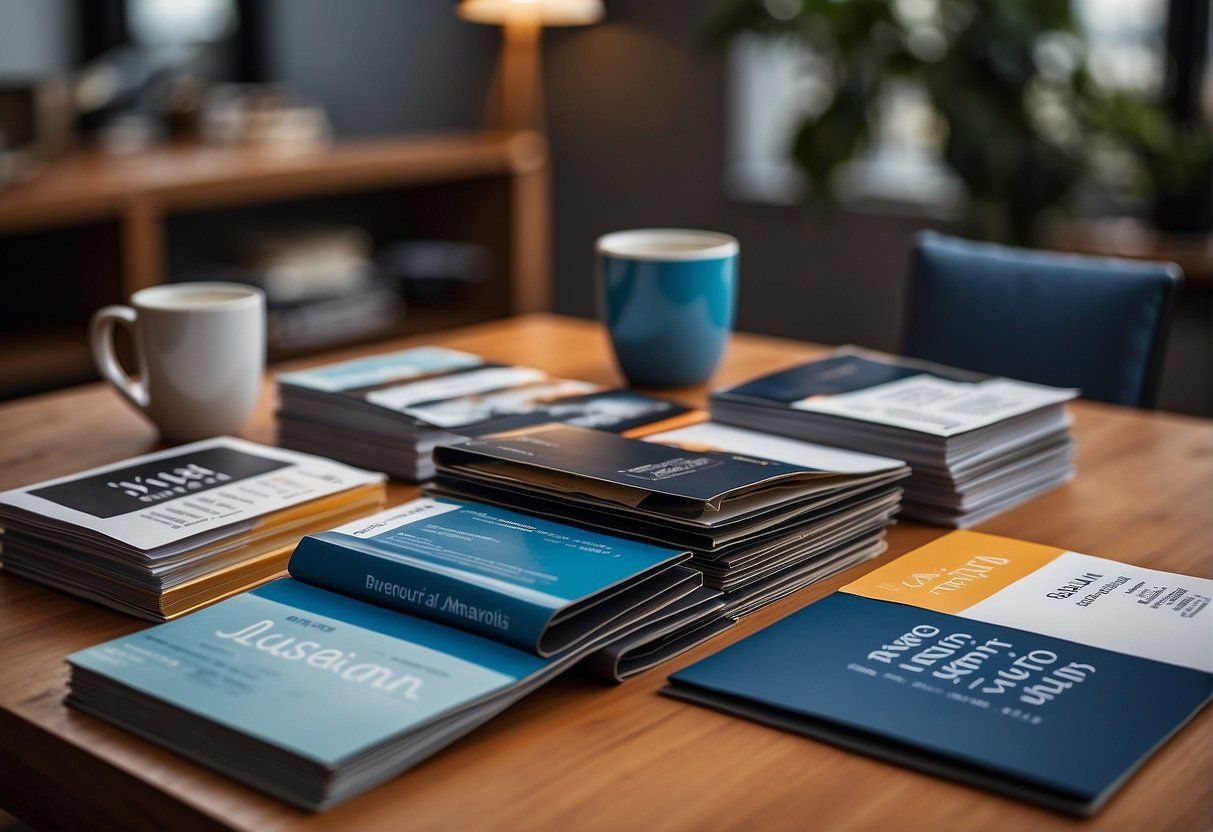
Compliance and Restrictions in Print Advertising
- Legal Compliance
: Advertising through print must adhere to the laws that regulate marketing practices. This includes respecting intellectual property rights by avoiding plagiarism, obtaining the necessary permissions for using images or content, and ensuring that statements about products or services are truthful and non-deceptive. Advertisers must also be mindful of specific industry regulations, such as those pertaining to tobacco, alcohol, or pharmaceuticals.
- For political campaigns , regulations might dictate transparency in funding sources and disclaimers regarding who has paid for the advertisement.
- Ethical Advertising
: Ethically produced printed materials take into account the values and norms of the society in which they are disseminated. Advertising should not manipulate or exploit the vulnerabilities of the audience. Instead, it should foster trust and goodwill.
- One should consider whether the content is appropriate for all audiences, as the reach of printed materials can be extensive and diverse. For instance, sensitivity should be practiced in areas such as religious and cultural representation.
- Audience Considerations
: It’s crucial that advertisers understand their audience to avoid causing offense or spreading misinformation.
- Information : The information presented must be accurate and not misleading. Claims about the attributes of a product or service should be supported by evidence.
- Audience : Advertisements should respect the demographic they are targeting, avoiding stereotypes or assumptions that could be considered discriminatory.
By carefully navigating these legal and ethical considerations, creators of printed advertising material can ensure their products are respectful, responsible, and in compliance with the necessary standards.
Emerging Trends
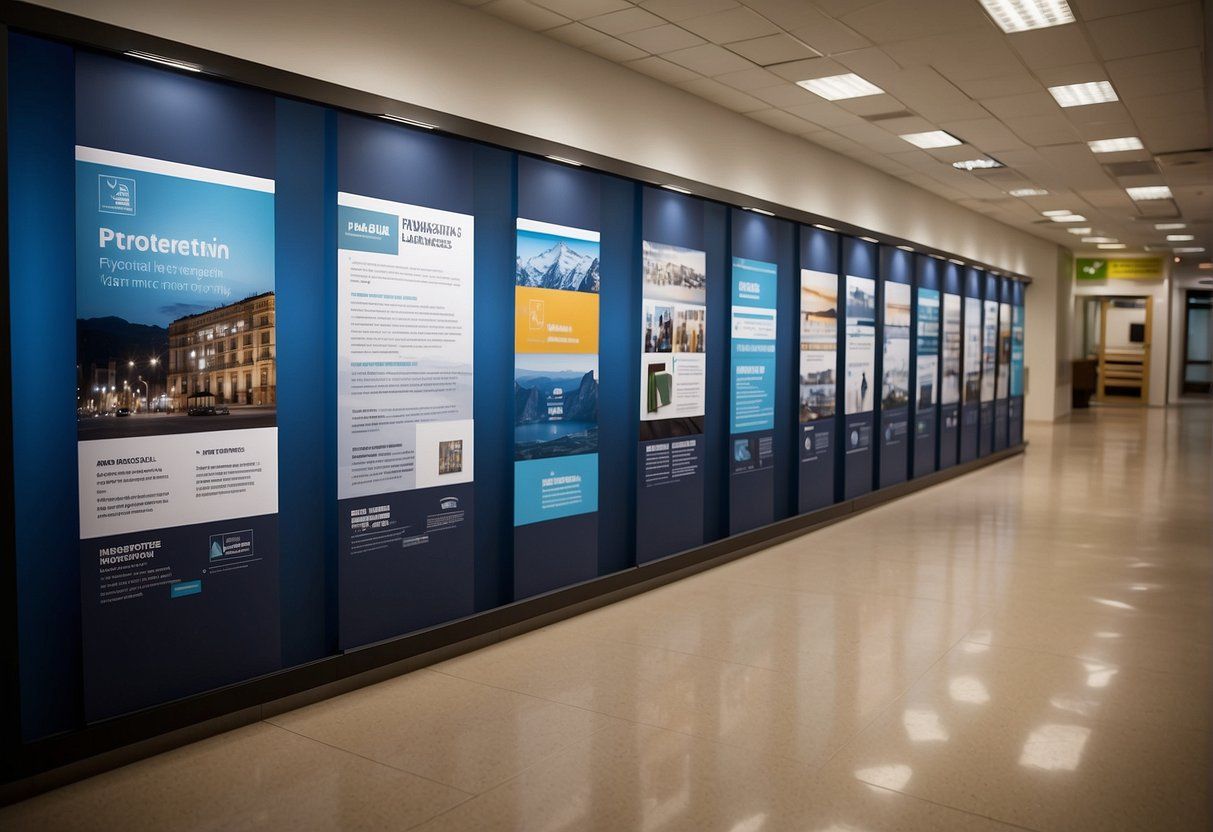
The landscape of printed products is continuously adapting due to technological advancements and shifting consumer preferences. These dynamics are influencing the ways in which brochures, banners, and posters are designed, produced, and utilized in marketing strategies.
Innovation in Print Technology
Recent breakthroughs in print technology have led to more efficient and higher quality production processes. Digital printing, for example, has seen major advancements with the integration of AI and automation , enabling personalized prints at scale. Variable data printing (VDP) allows for customized elements such as text and graphics to be printed on individual pieces without stopping or slowing down the process.
- 3D printing is also becoming more prevalent, extending the capability of printed products to have physical depth.
- Sustainability innovations are also at the forefront, with eco-friendly inks and recyclable materials becoming increasingly popular.
Print speed and quality have seen remarkable improvements with the introduction of new printing presses that combine digital flexibility with offset-like output. As a result, printers can now turnaround large orders of brochures, banners, and posters at unprecedented speeds without compromising on quality.
Evolving Consumer Preferences
Consumer preferences have a significant impact on the design and format of printed marketing materials. There is a growing trend towards personalized and targeted content in brochures, reflecting a broader move towards one-to-one marketing .
- Minimalistic designs with bold typographies and vibrant colors are in demand.
- Interactive elements such as QR codes link print to digital platforms, enhancing user engagement.
Consumers are also increasingly environmentally conscious, which affects their perceptions and acceptance of printed products. They often prefer materials that are labeled as sustainable or eco-friendly , with a clear path for recycling or reuse. This trend is driving changes in the creation of banners and posters, with a larger emphasis on lifecycle and sustainability.
Additional Resources
When delving into printed products, whether they be brochures, banners, or posters, it is beneficial to utilize various resources to enhance design and ensure effective communication. Below is a list of potential resources that may be of assistance during the design and production phases of these materials.
Templates and Design Tools:
- Adobe Spark and Canva : They offer user-friendly design platforms with a multitude of templates.
- Microsoft Office : Provides basic templates for brochures and posters within their software.
Educational Articles and Guides:
- PrintMag : Offers insights on current design trends and techniques.
- PrintingForLess : They have a resource center that covers various aspects of printing.
Professional Experts:
- Local print shops : Consult with in-house graphic designers for personal assistance.
- Graphic Design Forums : Online communities like GraphicDesignForum where individuals can seek advice from experts.
Technical Information:
- Printernational : It provides technical details on print sizes, formats, and other specifications.
- UPrinting : They have an online guide to paper types and finishing options.
Online Resources:
- Behance and Dribbble : Platforms to seek inspiration from other designers’ work.
- MOO : Offers ideas on creative design and custom printing options.
Professional Associations:
- AIGA : The professional association for design provides resources for standards and professional development.
It is recommended that they verify resource credibility and suitability for their specific project requirements. Each listed resource can offer valuable support in the creation of professional and impactful printed materials.
Conclusion
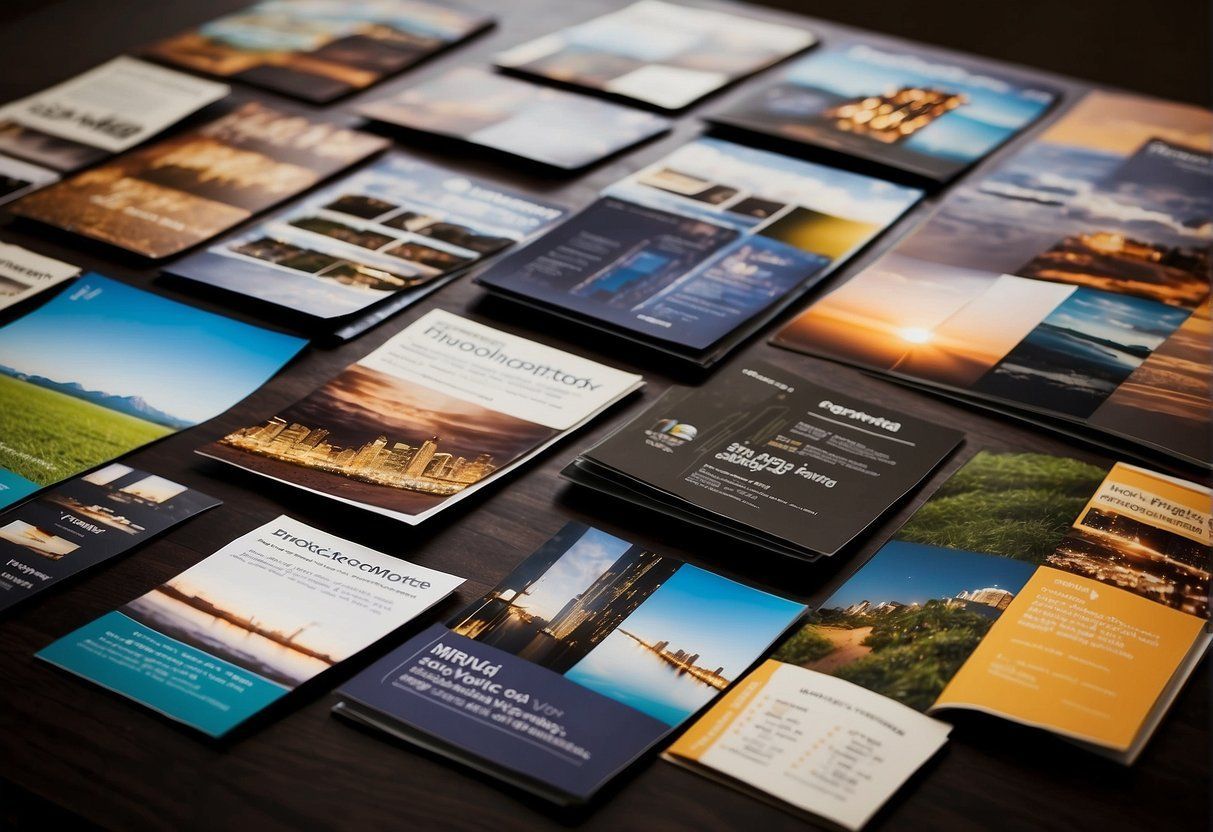
In assessing printed products, businesses must consider the unique advantages each type carries. Brochures offer comprehensive information in a compact format, ideal for detailed narratives about services or products. Their foldable nature allows for easy distribution and storage. Banners , on the other hand, are designed to grab attention in high-traffic areas. Their large size and durability make them suitable for outdoor use and repeated events.
Posters strike a balance between the succinct message of banners and the detail-oriented approach of brochures. They are versatile for both indoor and outdoor settings, though they are most effective in areas with foot traffic that allows for closer viewing.
- Effectiveness
: Depends on the context and the intended audience.
- Brochures: Direct customer engagement.
- Banners: Broad message outreach.
- Posters: Targeted information dissemination.
- Use-case scenarios : Vary based
